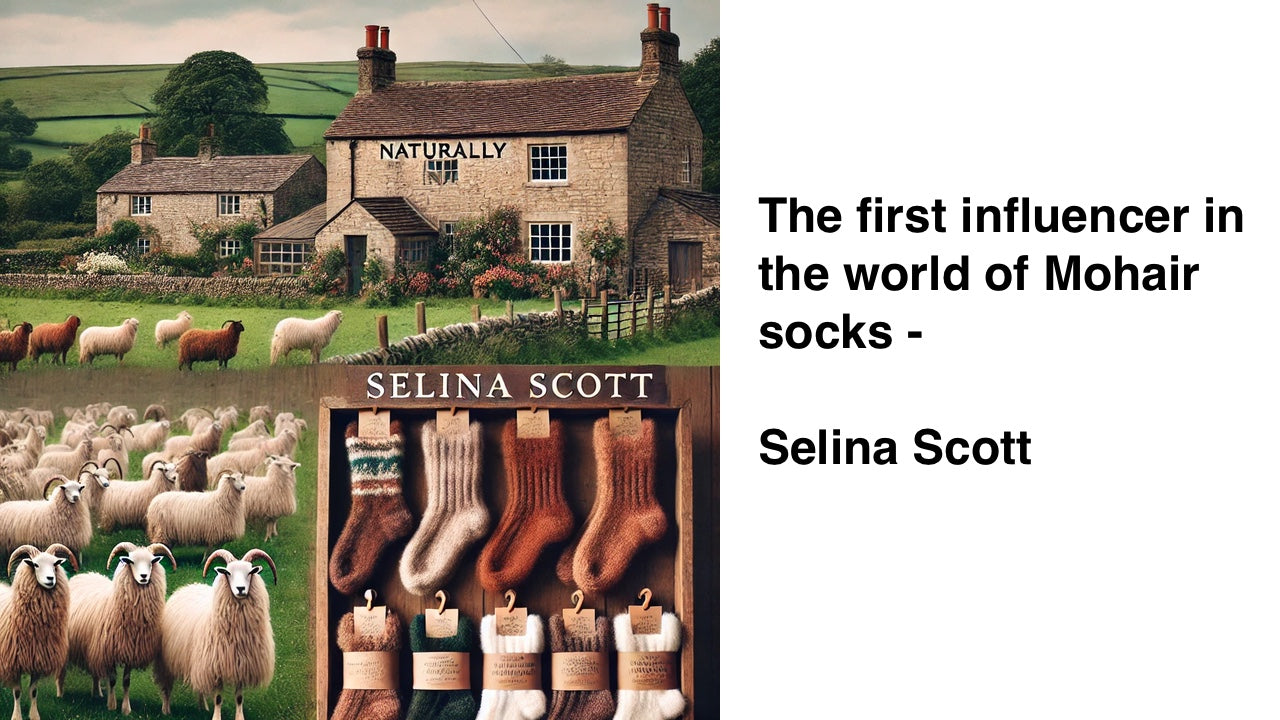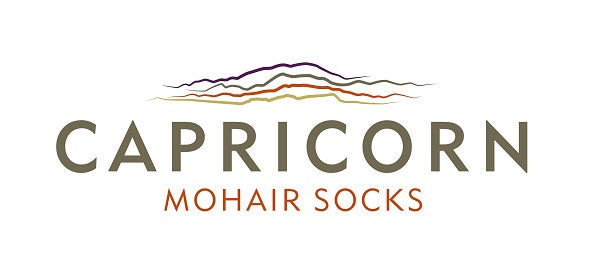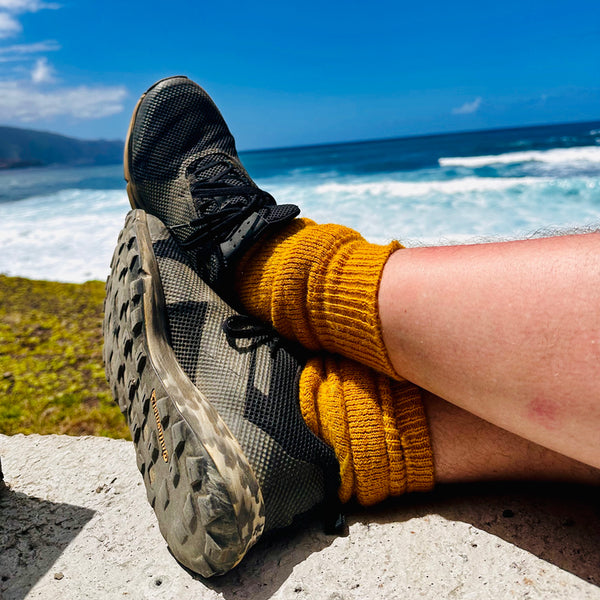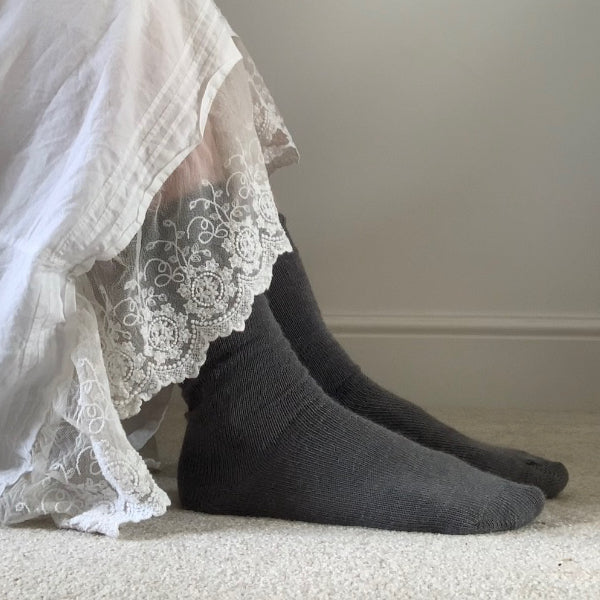
When it comes to mohair socks in the UK, one name stands out above all others—Selina Scott. Known primarily as a television broadcaster and journalist, Scott made a surprising yet impactful venture into the world of British manufacturing with her Naturally Selina Scott brand. She turned her passion for sustainability, natural fibres, and ethical craftsmanship into a thriving business that redefined the mohair sock market.
I know when I first visited our sock knitter in 2004, the same sock knitter that knitted Selina Scotts socks, I could not help but ask about Selina and how she got into making Mohair Socks.
A Passion for British Craftsmanship
Selina Scott truly became an advocate for British-made products, championing local industries at a time when many were moving production overseas. She sourced mohair from Angora goats and ensured that her socks were made entirely in the UK, supporting traditional mills and skilled British workers.
She lifted the profile of Mohair Socks to a new level in the UK.
At the time Selina Scott own a 200-acre farm in Ryedale, where she kept her Angora goats, whose fleeces she used to produce the mohair for her products. Her commitment to sustainability and quality set her apart in the market.
Unlike mass-produced synthetic alternatives at the time, Scott’s mohair socks were praised for their warmth, durability, and moisture-wicking properties - making them an excellent choice for those who valued comfort and longevity in their footwear.
The Naturally Selina Scott Brand
Under the Naturally Selina Scott brand, she developed a range of high-quality mohair socks, which quickly gained popularity among outdoor enthusiasts, walkers, and those who suffered from cold feet or circulation issues.
The socks were soft, luxurious, and highly functional, appealing to a broad audience seeking both style and practicality.
Her products were often promoted as the ultimate alternative to synthetic socks, with their natural fibres providing superior breathability and temperature regulation. Many customers praised her socks for their ability to keep feet warm in winter and cool in summer, reducing the risk of blisters and discomfort during long walks.
A Shop in Malton – Selina Scott’s Socks
In 2013, Scarborough-born Selina Scott expanded her business further by opening a shop in Malton, one of Ryedale’s most picturesque market towns. Named Selina Scott’s Socks, the shop offered a wide range of goat hair socks, cashmere gloves, and other warm accessories.
Speaking about her new venture at the time, Scott said: “I am delighted to be opening a shop in Malton, one of Ryedale’s most picturesque market towns. My socks are made from silky mohair, so feet stay fresh, warm and odourless. They even help keep feet cool in the summer, one of the many advantages of using a natural material such as mohair.”
The shop further cemented her reputation as the go-to name for high-quality mohair socks in the UK.
The Legacy of Selina Scott’s Mohair Socks
For years, Selina Scott’s brand was one of the most recognised names in the UK’s mohair sock industry. However, in recent years, her website and business closed down and according to companies house Selina Scott Luxury Natural Products Limited ceased trading in 2016
Her success proved that there was—and still is—a demand for high-quality, UK-manufactured mohair socks.
Today, other brands, like Capricorn Mohair socks have a lot to thank Selina Scott for, raising the profile of Mohair Socks in the UK.
Continuing the Tradition
As British consumers become increasingly aware of the benefits of natural fibers and ethical production, the demand for mohair socks remains strong.
While Selina Scott may have moved on from the industry, her impact lingers, inspiring both customers and manufacturers alike to support British mohair products.
At Capricorn Mohair Socks, we share the same passion for high-quality, British-made socks that Selina Scott championed. With a focus on comfort, performance, and ethical manufacturing, we continue to provide some of the best mohair socks available today.
Further reading
1. The Japanese Influence
2. Capricorn Mohair socks - how are they made?



